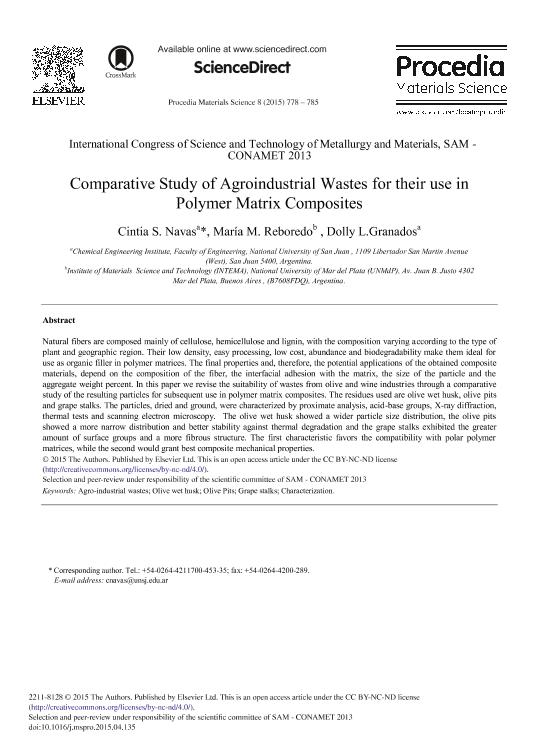Artículo
Comparative Study of Agroindustrial Wastes for their use in Polymer Matrix Composites
Fecha de publicación:
04/2015
Editorial:
Elsevier
Revista:
Procedia Materials Science
ISSN:
2211-8128
Idioma:
Inglés
Tipo de recurso:
Artículo publicado
Clasificación temática:
Resumen
Natural fibers are composed mainly of cellulose, hemicellulose and lignin, with the composition varying according to the type of plant and geographic region. Their low density, easy processing, low cost, abundance and biodegradability make them ideal for use as organic filler in polymer matrices. The final properties and, therefore, the potential applications of the obtained composite materials, depend on the composition of the fiber, the interfacial adhesion with the matrix, the size of the particle and the aggregate weight percent. In this paper we revise the suitability of wastes from olive and wine industries through a comparative study of the resulting particles for subsequent use in polymer matrix composites. The residues used are olive wet husk, olive pits and grape stalks. The particles, dried and ground, were characterized by proximate analysis, acid-base groups, X-ray diffraction, thermal tests and scanning electron microscopy. The olive wet husk showed a wider particle size distribution, the olive pits showed a more narrow distribution and better stability against thermal degradation and the grape stalks exhibited the greater amount of surface groups and a more fibrous structure. The first characteristic favors the compatibility with polar polymer matrices, while the second would grant best composite mechanical properties.
Archivos asociados
Licencia
Identificadores
Colecciones
Articulos(CCT - SAN JUAN)
Articulos de CENTRO CIENTIFICO TECNOLOGICO CONICET - SAN JUAN
Articulos de CENTRO CIENTIFICO TECNOLOGICO CONICET - SAN JUAN
Citación
Navas, Cintia S; Reboredo, Maria Marta; Granados, Dolly Lucía; Comparative Study of Agroindustrial Wastes for their use in Polymer Matrix Composites; Elsevier; Procedia Materials Science; 8; 4-2015; 778-785
Compartir
Altmétricas




